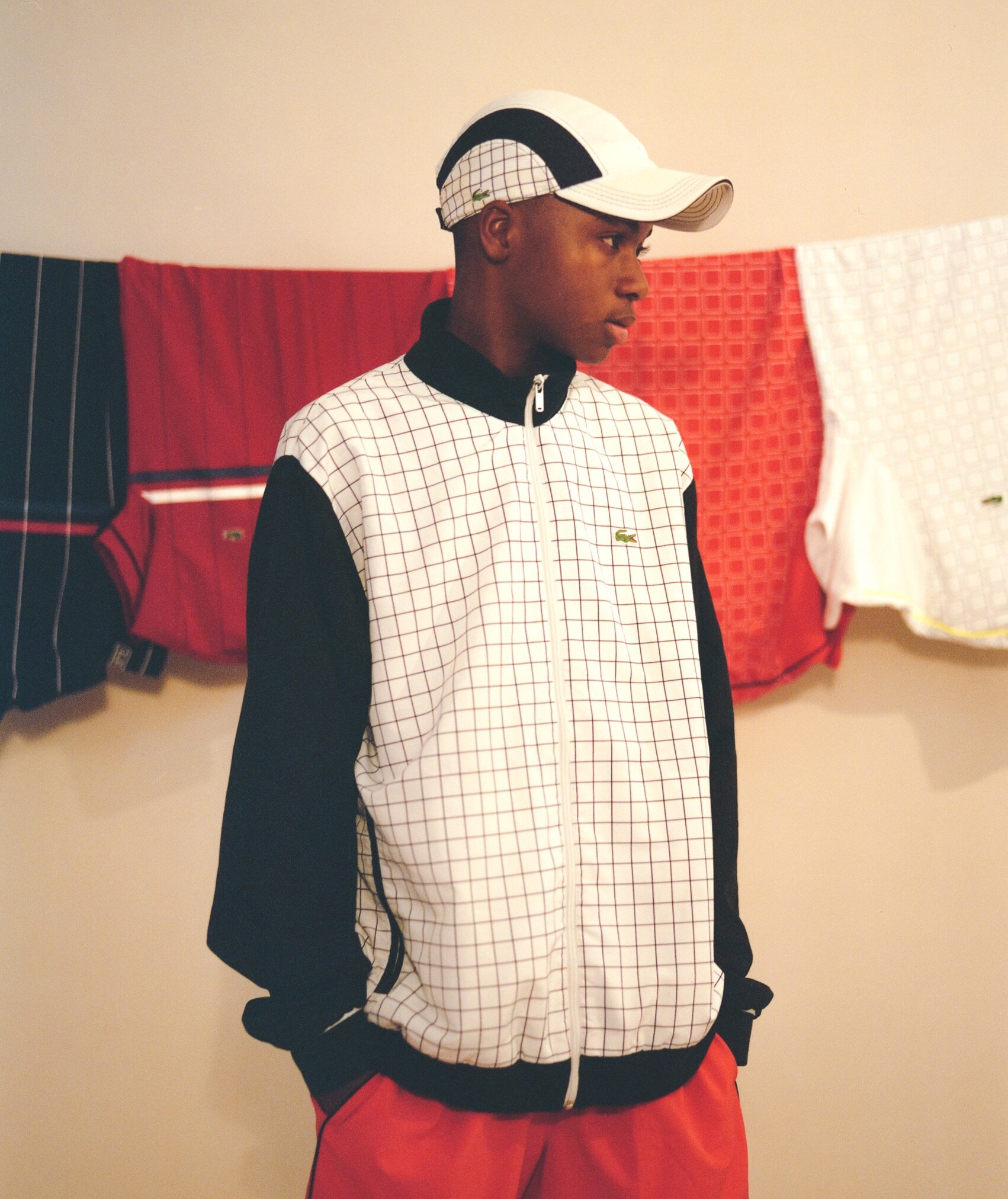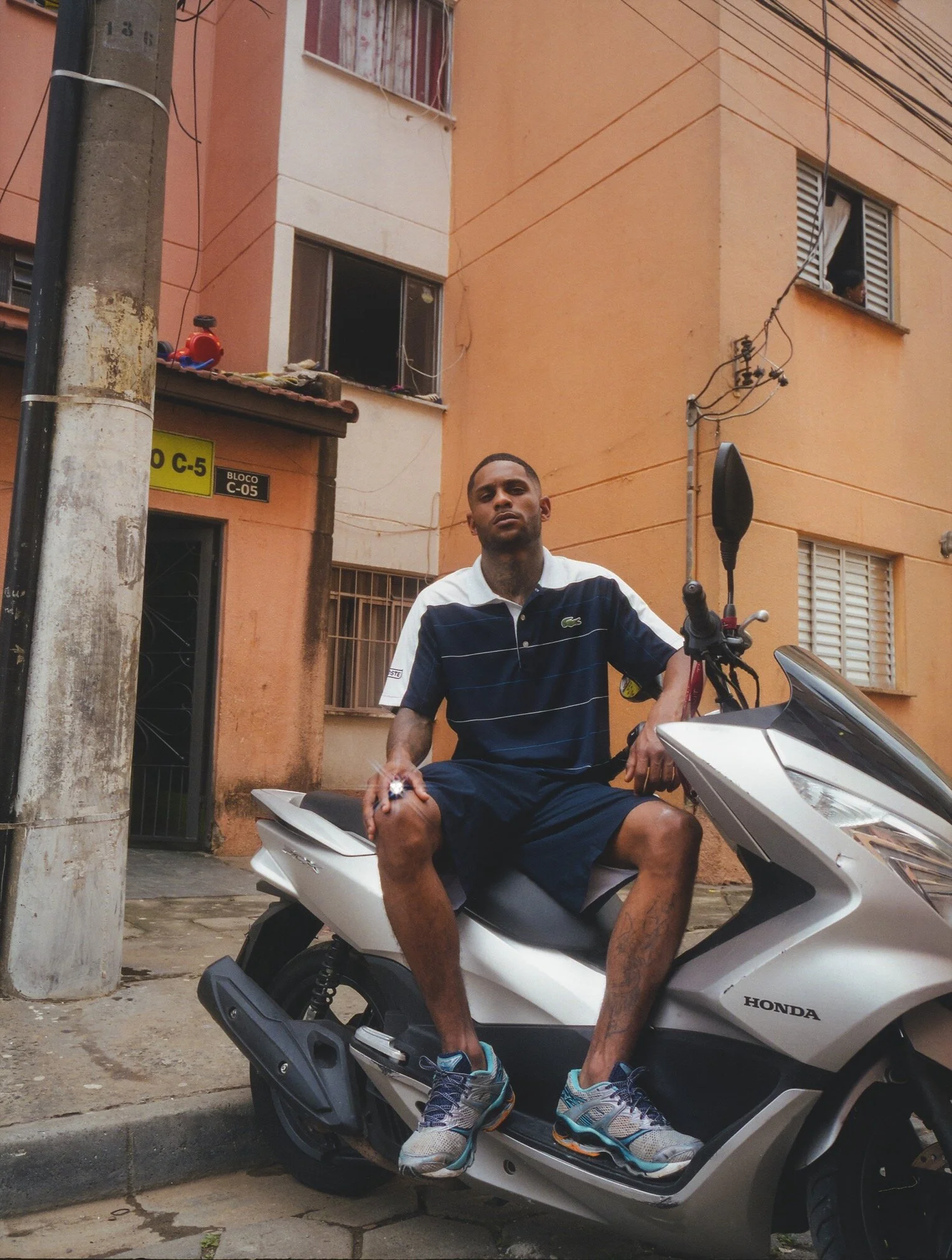Tropa da Lacoste: An editorial from São Paulo

In the rough areas of São Paulo, Lacoste is the most common brand.
While it is somewhat inaccessible, due to the value that it is sold and where it can be found, this does not prevent fashion from existing for years. It creates and boosts a scene of ostentation and a culture of hunting and acquiring gems.
In addition to the usage of the items, the community created a strong culture of collecting, where the famous relics are luxury items that may even become a bargaining chip among "lacosteiros" (as used in Brazil to define Lacoste addicts). The public have caused a real subversion of fashion values because we have a brand that was not made to be consumed like this, but it became one of the most used items by the people of Sao Paulo, which developed its aesthetic concept.
The fact that Lacoste is the most used brand in the favelas of São Paulo is nothing new for those who are part of the street culture of the Quebradas (rough areas in Brazil). But where did it start? Through funk, of course! Linked to the ostentation that the musical genre boosted and the lifestyle of MCs, like Neguinho, do Kaxeta, Yoshi and Kelvinho, the luxury items, which were not made for them, were celebrated in the favela making teenagers and young people consume it more and more.
It is still possible to see the strong culture in the trap of the area called "Baixada do Kyan", but which also has references and links to its origins in funk. A fact that Lacoste has become an aesthetic symbol of "looking good" and being ‘‘key’’ (slang that means "being stylish") on the outskirts.
When the discourse is placed on the question of not having been made for the "Quebrada", the notes, somewhat obvious, are not directed only to the aesthetic concept of using the product in a smart casual occasion. They revolve around the value that the product arrives in the country and where it can be found, that is, in elite malls.
The editorial comes to show that one of the most latent audiences of Lacoste in the country is not in the windows or advertising but on the streets. The creation of this fashion concept is so smart that it reaches a counterculture that transforms the brand into something that is marginalized.
Here in São Paulo it is common to see people waiting in line passionately to get their hands on the articles that are most key, but also later on if the person wants to exchange or sell, they can profit from higher price than when it what first bought since the product becomes a rare item. Some examples of this are the Andy Roddick collection, which can be found above R$ 300.00, or the Cool Cats collection, which is a partnership between Lacoste and the French collective, launched in the winter of 2011, quoted among collectors in the values from R $ 400.00.
Many lacosteiros find ways to sell, exchange and even discuss issues related to the brand in social media groups, especially Facebook. It is there that it is possible to find rarities or even a group that can import the articles for sale. Also, it is important to highlight that within this culture there are people who become references in the use of the brand, known for having a large collection of pieces or for always launching trends that will go viral in the "Quebradas".
Some common trends that were created through this new fashion concept are the reference of the: "' L ' with the hand"; photos with various pieces on the body, such as several shirts on the shoulder or several caps on top of each other; and the use of funk lyrics that speak of the brand to caption photos. We must not forget to mention that at funk dances in São Paulo it is cultural to use "Umbrellas", the famous umbrellas, and one of the most desired Umbrellas brands of this tour are those that belong to Lacoste.
Therefore, the editorial "Tropa da Lacoste" (Lacoste Troop") was born out of the need that creative directors and stylist Neguinho de Favela and Samir Bertoli felt to portray what this marginalized aesthetic process is capable of; creating a new identity of the concept of what fashion is. Artistically showing, through the hands of photographer Amanda Adász, how she re-signifies and consumes fashion on the outskirts of São Paulo. Bringing huge cultural baggage, which in addition to an editorial, we know the culture and potential of what is possible to create in Brazil.
Credits:
Creative direction, production and styling: @samirbertoli and @neguinhodefavela16
Styling assistant: @saulofather
Photography: @adaszz
Backstage: @atemporalboy
Text: @correrua_
Translation: @marlenecoelho__ and @guidomendoca
Support: @dinucciraridades

















